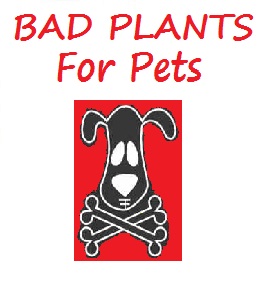Geranium-Leaf Aralia

Polyscias guilfoylei, also known as Wild Coffee, Coffee Tree, Geranium-Leaf Aralia or simply Aralia is an evergreen species of shrub native to the tropical areas of Africa, Asia and Australia; parts of North and Central America, and the entirety of South America. Aralia can grow to heights of 24 feet, forming a dense wall of foliage. For this reason the plant has found fairly widespread use in ornamental landscaping and can often times be found positioned so as to create a natural privacy fence. The leaves are long and 1-pinnate with leaflets oppositely arranged. The blades are variable, but most often ovate or elliptic and coarsely dentate or lacerate. The leaves will typically have a white or cream colored variegation, but may also be entirely dark green. In summer it produces inconspicuous flowers.
The plant should be considered toxic as it does contain saponins, triterpenic glycosides and other inidentified irritating agents. The saponins are irritants that may cause mild to severe oral and skin irritation. The polyacetylene terpenoid falcarinol is primarily an irritant. Chewing on the leaves or stems may cause swelling inside the mouth and throat. In sensitized individuals this could become quite severe possibly restricting the ability to eat, drink or even breathe. The appearance of a rash inside and around the hairless portions of the mouth (lips, gums, nose and tongue) is also not uncommon.Avoid further ingestion of the plant and consult a veterinarian. Life threatening intoxication is exceedingly rare, fatalities, while theoretically possible are basically unheard of. As per the case histories and documentation that is available the most serious threat is likely posed by the possibility of an extreme allergic reaction to the plants irritant toxins. In regards to a specific treatment regimen, common sense symptomatic care will probably be all that is required. If the ingestion was recent remove any existing plant matter from the mouth and flush thoroughly with water. If vomiting does not occur it may be induced by giving and emetic such as 3% hydrogen peroxide orally at a dose rate of 1 teaspoon per 10 lbs of body weight. The pet will more than likely start vomiting spontaneously without the help of an emetic, as their body tries to expel this non digestible material. The universal antidote, activated medical charcoal may also prove to be of some use in absorbing the toxins. If the pet ingested a large quantity of plant material then it may be beneficial to empty the stomach contents by way of gastric lavage.
Ensure the pet gets plenty of fluids to avoid possible dehydration caused by diarrhea. To alleviate the gastrointestinal upset and diarrhea; Kapectolin may be given at a dose rate of 1 to 2 ml/kg four times a day. Kapectolin provides a coating action that protects the stomach lining. Sucralfate may also be used as for gastrointestinal irritation as it reacts with the acids in the stomach to form a paste-like material capable of acting as a barrier between the stomach and its contents. Sucralfate is typically given to dogs weighing more the 60lbs: 1g every 6 to 8 hours; for dogs under 60 lbs: 0.5g every 6 to 8 hours; Cats: 0.25g every 8 to 12 hours to reduce irritation of the stomach and intestines. The prognosis will depend on the amount ingested and the resultant severity of the intoxication. Serious intoxications of animals are exceptionally rare and in most cases symptoms will be limited to gastrointestinal upset (vomiting and diarrhea). With symptomatic care most animals will make a full recovery in a few hours to a few days.




